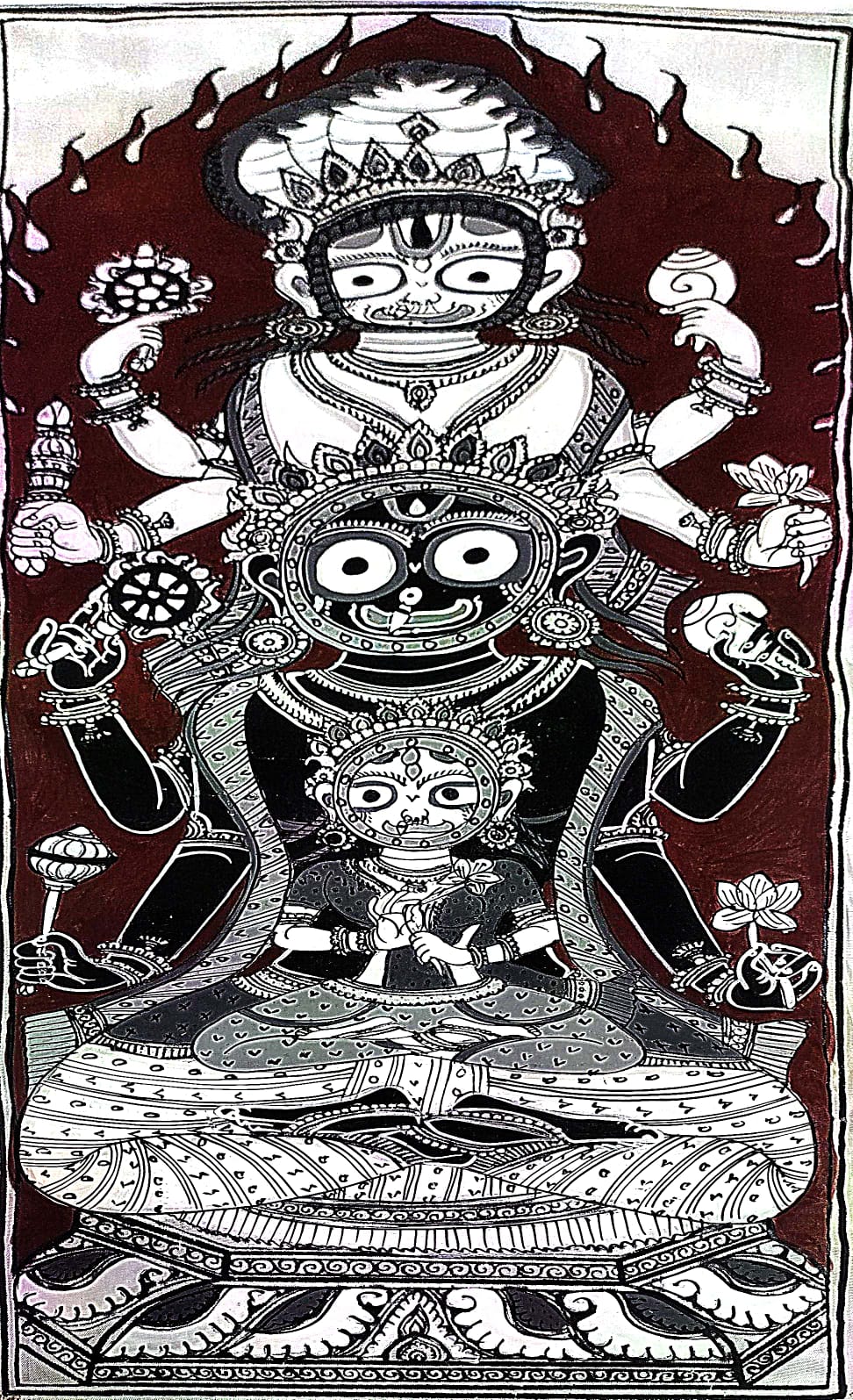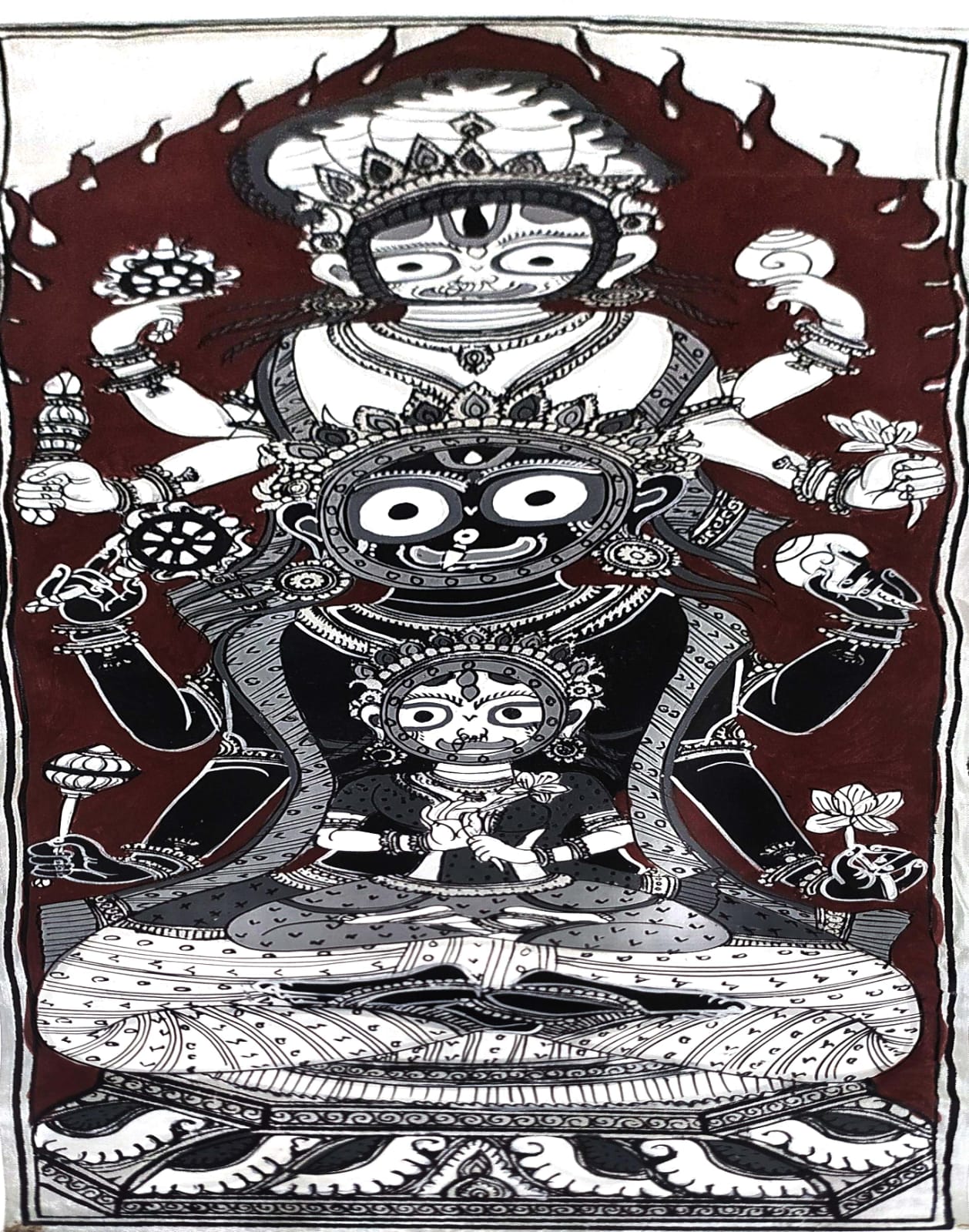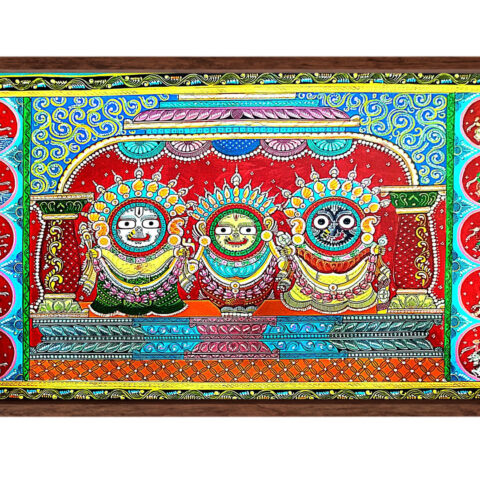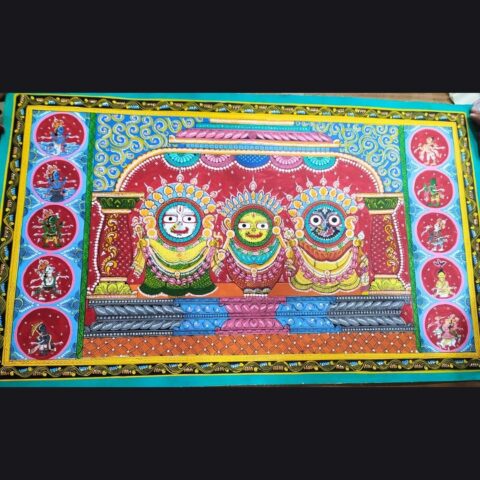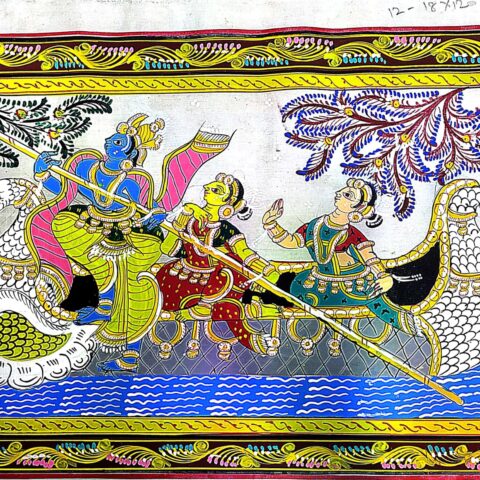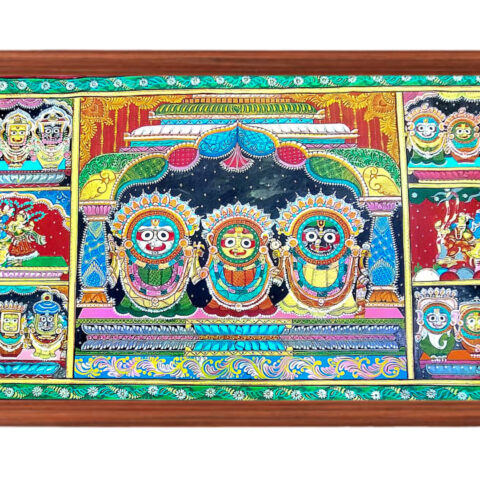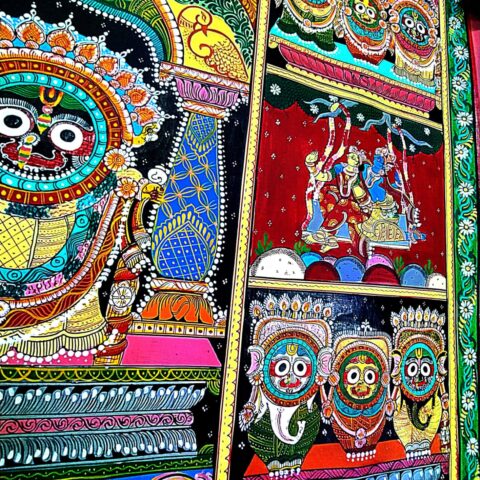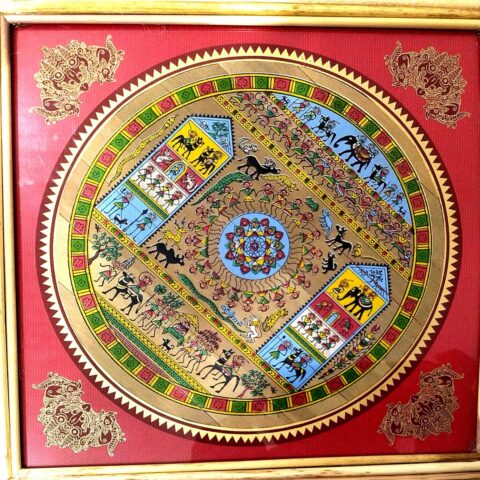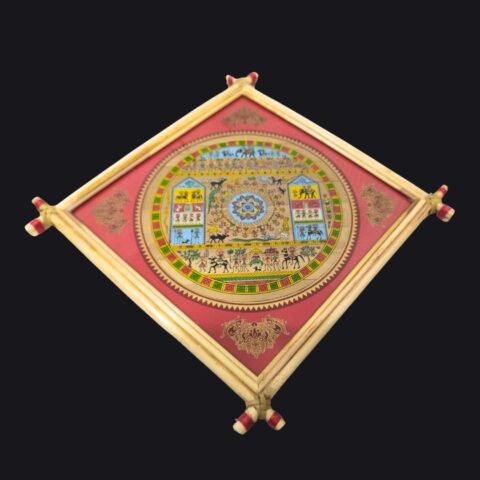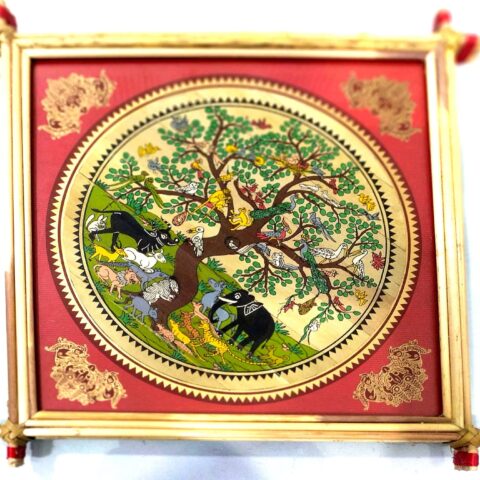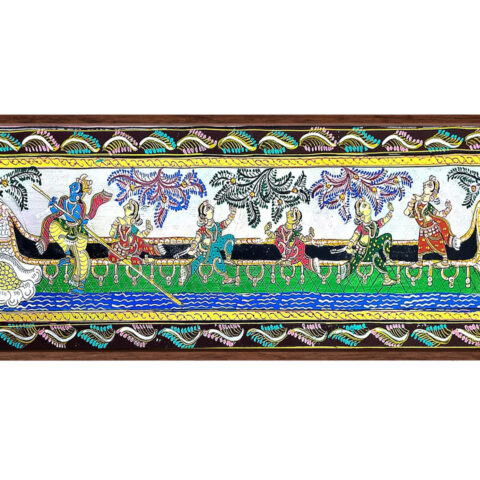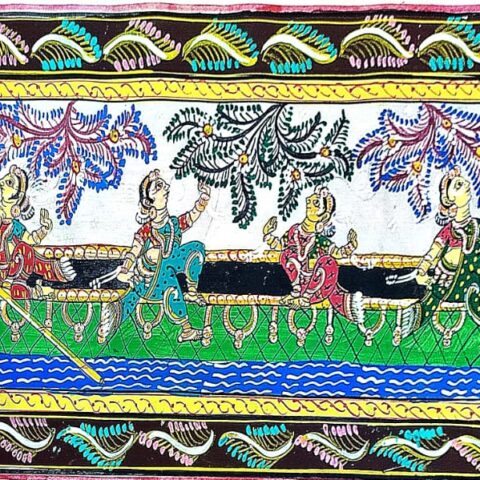Canvas Base
-
A pre-stretched cotton canvas or cotton cloth mounted on board is used as the painting base.
-
If untreated, the cloth is coated with a mixture of chalk powder (sankha churna) and tamarind seed gum, then polished with a stone to give it a smooth, leathery texture.
-
For modern canvas, a white acrylic gesso may be used as an alternative primer.
2. Natural Pigments (Vibrant Hues)
-
Black (for outlines and Jagannath’s face): Made from lamp soot or burnt coconut shells.
-
Red (used in clothing, borders): From hingula, a red mineral pigment.
-
Yellow (for ornaments and divine features): Made from haritala or turmeric.
-
White (for the eyes, markings, and decorative lines): Ground from conch shells.
-
Blue and Green (used in backgrounds and embellishments): Made from indigo and plant extracts.
-
All pigments are blended with natural tamarind gum for adhesion and long-lasting color.
3. Brushes
-
Brushes are handmade from fine animal hair (such as squirrel or mongoose) fixed to bamboo or wooden handles.
-
Used for precise linework, borders, facial features, and decorative patterns.
4. Adhesive (Binder)
-
A natural adhesive made by boiling tamarind seeds is used for:
-
Preparing the canvas surface.
-
Mixing with powdered pigments to form durable, vibrant paints.
-
5. Optional Embellishments
-
Gold or silver foil detailing may be added using traditional gum adhesives.
-
Natural shellac or lacquer can be applied as a protective coating to give a glossy finish.







